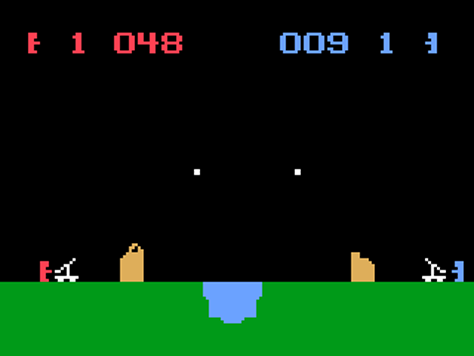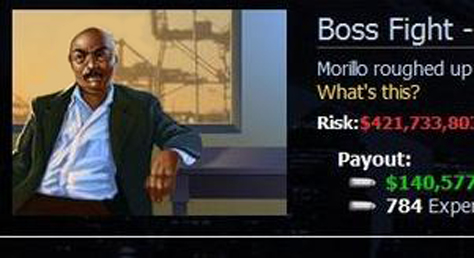传统游戏技术推动《愤怒的小鸟》等新兴游戏的发展
很多七十年代的人都是伴随着雅达利和任天堂的游戏成长的。如果你问问周边30多岁的人:“在这个游戏产业不断发展的时代里,你们的生活都发生了什么样的变化?”他们可能会异口同声地回答:“当任天堂发布时,所有的一切都发生的变化。《Zelda》,《Mario》和《Excitebike》都是我喜欢的游戏。”
任天堂的游戏会带给玩家一种刺激,奇妙且错综复杂的体验。这些早期的游戏也为Zynga等社交游戏公司的建立铺平了道路。这些公司为很多七十年代人创造了童年的记忆和怀旧情愫,并把他们带回了那个对高像素画面充满渴望的年代。
以下的内容将讨论传统技术(游戏邦注:例如8位游戏机)是如何推动今天这些大型娱乐公司的发展。
8位游戏的进化
视频游戏的概念最早出现于20世纪40年代,但是直到1977年雅达利2600(Atari 2600)发行后它才开始广泛影响世界。雅达利游戏机是款家庭游戏机,它奠定了我们今天所看到的数十亿美元游戏产业的基础。雅达利在1977年的假期季里发布了一台附带有9款游戏的游戏机。这款游戏机是款家庭体验游戏机,它的诞生为我们今天玩的许多游戏提供了灵感。当电视屏幕和电脑屏幕开始产生相互作用时,人们开始期望能够从中获得更多乐趣,而这款游戏的初衷就是为了实现人们的这种期望。当时,包括雅达利在内的游戏系统所创造的许多早期游戏形式现在仍然风靡于社交游戏和手机游戏中。
例如著名的手机游戏《愤怒的小鸟》。它运用了传统的大炮游戏(游戏邦注:例如《Smithereens!》,如上图所示)中的游戏元素。1982年,Magnavox针对于游戏机Odyssey 2制作的《Smithereens!》正是一种运用简单的游戏机让玩家去判断目标距离并向对方开火的游戏。通过准确地判断距离,包括判断抛物线上的距离,玩家可以准确地确定目标。《愤怒的小鸟》在这一设置上与其类似。
紧随雅达利,任天堂也进入了游戏市场。1985年,在大规模的游戏产业危机中期,任天堂发布了Nintendo Entertainment System(NES)。IGN称这款游戏机是历史上最顶级的游戏机。通过这款游戏机的发行,任天堂给世界带来了《Legend of Zelda》和《Super Mario Brothers》这两款世界知名的游戏。它们不仅赋予了新一代游戏更好的图像和音质,同时也创造了一个充满策略,故事情节和人物特性的新游戏系统。NES游戏平台进一步巩固了家庭游戏,并为当今玩家提供了一个怀旧的背景。
Zynga,Playdom和Playfish等公司正是在这种基础上建立起来的。这些公司都深入研究了玩家对于Odyssey,雅达利以及NES等游戏系统的体验感受,所以他们创造的游戏都能让人回想起早期的八位体,低保真度游戏机,这些游戏虽然简单,但是却能让人上瘾,可以说它们是对早期游戏(诸如《Asteroids》和《Zelda》)的再循环设计。像《Mafia Wars》就是在新的社交游戏的定义上与1986年的《Dragon Warrior》相结合(如上图所示),带给玩家一种浓厚的怀旧气息。这种游戏不仅满足了玩家们的心理追求,同时也为游戏吸引了一大批忠实用户。(本文为游戏邦/gamerboo.com编译,转载请注明来源:游戏邦)
How Zelda paved the way for ZyngaLegacy technologies help pave the way for today’s largest entertainment companies
Many of us remember playing Atari and Nintendo games growing up. If you asked any 30-something about what it was like to grow up as the video-game industry evolved, you would probably hear something like this: “When Nintendo came out, it changed everything. I loved playing Zelda and Mario and Excitebike.”
The Nintendo gaming experience created a sense of excitement, wonder, and intrigue. These emotional experiences have stuck with us, and those early games established gaming conventions that paved the path for Zynga and other social-gaming companies. The experiences these companies offer tap directly into childhood memories, creating a feeling of nostalgia and taking us back to a time when discovering the next pixelated dungeon was the highlight of our week.
Likewise, many of us remember Hollywood’s early forays into 3D filmmaking. We saw our favorite slasher and monster movies in theaters, wearing goofy red-and-blue tinted glasses. Eventually, polarized lenses in plastic frames and other more sophisticated technologies replaced these. But it wasn’t until recently that 3D film began to fully realize its potential with the creation of newly immersive movie-theater experiences.
This month’s column explores how legacy technologies such as 8-bit video games and 3D movies have helped pave the path for some of today’s largest entertainment companies.
The evolution of the 8-bit gaming experience
The concept of video-based games has been around since the 1940s, but video gaming did not have worldwide impact until the release of the Atari 2600 in 1977. Atari established the market for home-based gaming consoles and, consequently, launched the billion-dollar gaming industry we see today. Atari released the console during the holiday season of 1977 and had nine games available for users. These games set the tone for the family gaming experience and inspired many of the games we have all played and loved. It was this initial gaming experience that set the tone for what people could expect and would feel when interacting with a television or computer screen for fun. Atari, and the other gaming systems of the time, established many of the earliest forms of gameplay that are still prevalent in social and mobile gaming.
For example, the popular mobile game Angry Birds uses many gameplay elements of classic artillery-style games such as Smithereens! as you can see in Figures 1 and 2. Developed by Magnavox for the Odyssey 2 and released in 1982, Smithereens! used a simple play mechanic that let players judge the distance to a target and fire a catapult at an opponent. By correctly judging the distance, including the arc of the projectile, a player can accurately find his or her target, much as in Angry Birds.
Nintendo followed Atari into the gaming market, releasing the Nintendo Entertainment System in 1985 in the middle of a massive video game–industry crash. IGN eventually named the Nintendo Entertainment System the top video-game console in history. Nintendo introduced such classic games as Legend of Zelda and Super Mario Brothers. Their new generation of games enhanced the gaming experience with better graphics and sound, but also established new game mechanics in the areas of strategy, storyline, and character development. The NES gaming platform further solidified the look and feel of home-based gaming and set the stage for that nostalgic feeling we get when playing those types of games today.
This is where companies like Zynga, Playdom, and Playfish come into play. These companies are tapping into the historic user experiences gamers obtained from systems like the Odyssey, Atari, and NES. Their look and feel is reminiscent of the 8-bit, low-fidelity standard of that earlier time, and their simple, but addictive style of gameplay recycles the interaction design models of original favorites like Asteroids and Zelda. As Figures 3 and 4 show, games like Mafia Wars combine the nostalgic feeling of historic games like Dragon Warrior (1986) with the new frontier of social connectivity. This creates a very powerful psychological connection between users and, ultimately, a very large fan base.(source:vator)











































 闽公网安备35020302001549号
闽公网安备35020302001549号